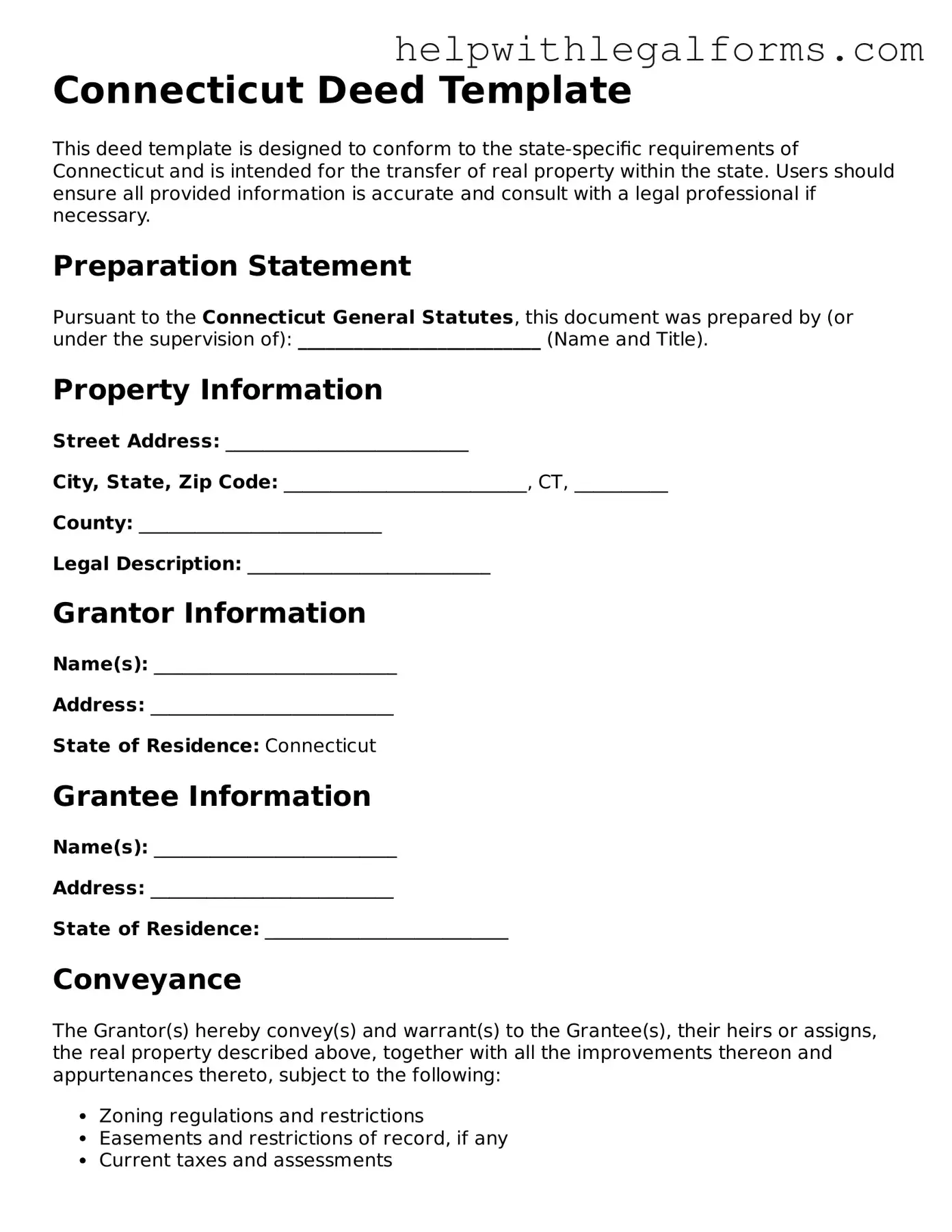Connecticut Deed Template
This deed template is designed to conform to the state-specific requirements of Connecticut and is intended for the transfer of real property within the state. Users should ensure all provided information is accurate and consult with a legal professional if necessary.
Preparation Statement
Pursuant to the Connecticut General Statutes, this document was prepared by (or under the supervision of): __________________________ (Name and Title).
Property Information
Street Address: __________________________
City, State, Zip Code: __________________________, CT, __________
County: __________________________
Legal Description: __________________________
Grantor Information
Name(s): __________________________
Address: __________________________
State of Residence: Connecticut
Grantee Information
Name(s): __________________________
Address: __________________________
State of Residence: __________________________
Conveyance
The Grantor(s) hereby convey(s) and warrant(s) to the Grantee(s), their heirs or assigns, the real property described above, together with all the improvements thereon and appurtenances thereto, subject to the following:
- Zoning regulations and restrictions
- Easements and restrictions of record, if any
- Current taxes and assessments
Consideration
The total consideration paid for this conveyance of property is $________________ (USD).
Signatures
This deed is executed this ____ day of __________, 20____.
Grantor's Signature: __________________________
Grantor's Printed Name: __________________________
Grantee's Signature: __________________________
Grantee's Printed Name: __________________________
Acknowledgment
This document was acknowledged before me on this ____ day of __________, 20____, by the above-named Grantor(s).
Notary Public's Signature: __________________________
Commission Expires: __________________________
